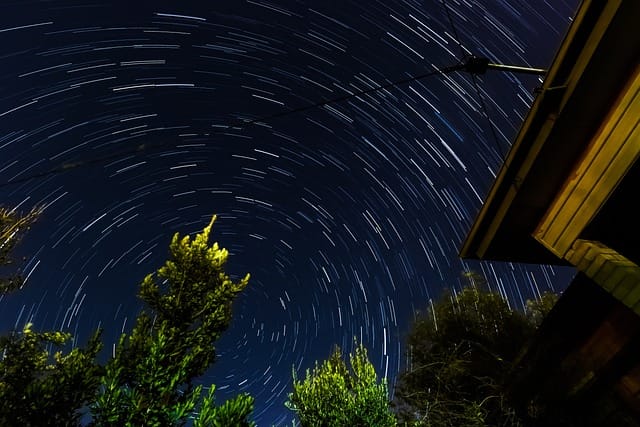If you want to create time lapse videos, you’ve come to the right place. Time lapse videos are a stunning way to capture the beauty of our world, showcasing transformations and movements that often go unnoticed in real time. From blooming flowers to bustling city streets, time lapse photography allows you to compress hours, days, or even months into a few captivating minutes. This comprehensive guide will explore the essential steps and techniques needed to create time lapse videos that truly impress.
Creating beautiful time lapse videos can seem daunting, but with the right planning and execution, anyone can achieve stunning results. Whether you’re an aspiring filmmaker, a nature enthusiast, or just someone who loves photography, this guide will equip you with the knowledge and tools to create compelling time lapse videos that tell a story.
Understanding Time Lapse Photography
What Is Time Lapse Photography?
Before we dive into the steps to create time lapse videos, it’s crucial to understand what time lapse photography entails. Time lapse involves capturing a series of images at set intervals over a specified period and then playing them back at a higher frame rate. This technique condenses time, allowing viewers to see changes that might take hours or even days unfold in a matter of seconds.
Key Concepts in Time Lapse Photography
To successfully create time lapse videos, you’ll need to familiarize yourself with some key concepts:
- Frame Rate: This refers to the number of frames captured per second. For time lapse videos, a frame rate of 24 to 30 frames per second (fps) is standard.
- Interval: The interval is the duration between each shot. This should be tailored to the speed of your subject’s motion; faster-moving subjects require shorter intervals, while slower subjects can be captured with longer intervals.
- Duration: The total shooting duration will determine the final video length. For example, capturing images for one hour at five-second intervals will yield a time lapse video of about 12 seconds at 30 fps.
Equipment Needed to Create Time Lapse Videos
Creating time lapse videos requires specific equipment to ensure the best results. While you can achieve impressive effects with just a smartphone, investing in a few essential tools can significantly enhance the quality of your videos.
1. Camera
The type of camera you choose plays a vital role in the quality of your time lapse video. Here are some options:
- DSLR or Mirrorless Cameras: These offer superior image quality and the ability to control settings manually, allowing for precise adjustments in exposure, shutter speed, and aperture.
- Smartphones: Many modern smartphones come equipped with high-quality cameras and built-in time lapse features, making them convenient for beginners. Apps like Filmic Pro can further enhance time lapse capabilities.
- Action Cameras: Cameras like GoPro are compact, durable, and designed for various conditions, making them ideal for capturing time lapse in dynamic environments.
2. Tripod
A sturdy tripod is essential for time lapse photography. Even the slightest movement can disrupt the continuity of your video. Look for a reliable tripod that can support your camera’s weight and allow for precise adjustments.
3. Intervalometer
An intervalometer allows you to set the intervals for capturing images automatically. Some cameras have built-in intervalometers, but if yours doesn’t, you can purchase one separately. This device is crucial for ensuring consistent timing in your shots.
4. Neutral Density (ND) Filters
ND filters reduce the amount of light entering your lens, allowing you to shoot at slower shutter speeds even in bright conditions. This can result in smoother motion in your time lapse videos, especially in outdoor scenes.
5. Editing Software
Post-production is where you can truly enhance your time lapse videos. Editing software allows you to compile your images, add music, and refine your footage. Some popular options include:
- Adobe Premiere Pro
- Final Cut Pro
- iMovie
- DaVinci Resolve
Steps to Create Time Lapse Videos
Creating a stunning time lapse video involves several steps, each crucial to the overall quality and impact of your final product.
Step 1: Choose Your Subject
Selecting an engaging subject is the first step toward a compelling time lapse video. Consider scenes that undergo noticeable change over time. Here are some ideas:
- Nature: Flowers blooming, clouds moving, tides rolling in and out, or the changing seasons.
- Urban Life: Traffic flow, busy streets, or construction sites.
- Artistic Projects: Painting, sculpting, or any creative process that can be documented over time.
Step 2: Plan Your Shoot
Planning is key to the success of your time lapse project. Consider the following factors:
- Timing: Determine the best time for your shoot. For outdoor scenes, consider the position of the sun, weather conditions, and time of day.
- Location: Choose a location that provides a clear view of your subject. Popular spots include parks, city rooftops, or scenic overlooks.
- Duration: Decide how long you’ll capture images. Make sure your battery and memory card can accommodate your shooting duration.
Step 3: Set Up Your Equipment
Once you have your subject and plan in place, it’s time to set up your equipment:
- Set Up Your Tripod: Position your tripod securely, ensuring stability.
- Attach Your Camera: Mount your camera on the tripod and frame your shot correctly.
- Connect the Intervalometer: If you’re using one, connect it to your camera and set the interval based on your shooting plan.
Step 4: Configure Camera Settings
Adjusting your camera settings is crucial for achieving optimal results:
- Mode: Set your camera to manual mode for precise control over exposure settings.
- Exposure Settings: Adjust the aperture, shutter speed, and ISO based on the lighting conditions. A lower ISO will help reduce noise in your images.
- Focus: Use manual focus to prevent your camera from refocusing during the shoot, which can create inconsistent shots.
Step 5: Start Shooting
Once everything is set up, start capturing your time lapse sequence. Monitor the camera periodically to ensure everything is functioning correctly, but avoid touching the tripod or camera to maintain stability.
Step 6: Edit Your Time Lapse Video
After capturing your images, it’s time to compile them into a video. Here’s a simple workflow for editing:
- Import Your Images: Transfer your images to your computer and import them into your editing software.
- Create a New Project: Set up a new project and define the resolution and frame rate for your video.
- Compile the Images: Arrange the images in the correct order on the timeline. Most editing software allows you to select a sequence of images and compile them automatically.
- Adjust the Speed: Depending on your interval and desired length, adjust the playback speed to create the time lapse effect.
- Add Music and Effects: Enhance your video with music, sound effects, or text overlays. Ensure the music complements the mood of your footage.
- Export Your Video: Once you are satisfied with your edits, export the final video in the desired format and resolution.
Step 7: Share Your Video
After exporting your time lapse video, it’s time to share it with your audience. Consider uploading it to platforms such as:
- YouTube
- Vimeo
- TikTok
Engage with your audience by providing insights about the process and behind-the-scenes information about your time lapse project.
Tips to Create Time Lapse Videos
Creating stunning time lapse videos requires more than just equipment and knowledge. Here are some valuable tips:
Experiment with Different Intervals
Don’t hesitate to experiment with various intervals to find what works best for your subject. For instance, while shooting flowers blooming may require a longer interval, capturing clouds might only need a few seconds.
Utilize Natural Light
Lighting plays a crucial role in time lapse photography. Aim to shoot during the golden hour (the hour after sunrise and before sunset) for soft, diffused lighting. The warm tones during these times enhance the visual appeal of your video.
Stabilize Your Shots
Use stabilization tools or software to minimize camera shake. Post-processing software often includes stabilization features, which can smooth out shaky footage, creating a more polished final product.
Plan for Weather Changes
Keep an eye on the weather forecast and be prepared for changes that might affect your shoot. Having a backup plan can save you time and effort. If rain is expected, consider capturing indoor scenes or have an alternate outdoor location in mind.
Advanced Techniques to Create Time Lapse Videos
Creating stunning time lapse videos can involve advanced techniques that elevate your work. Here are some methods to consider:
1. Hyperlapse
A hyperlapse is a dynamic time lapse video where the camera moves through the scene. This technique can create visually stunning sequences, such as walking through a city or moving along a scenic path. Here’s how to create a hyperlapse:
- Plan Your Route: Choose a path or area to walk that will provide an interesting visual experience.
- Stabilize Your Camera: Use a gimbal or steady hand to maintain smooth motion while shooting.
- Capture Images at Intervals: Take photos at regular intervals as you walk, ensuring consistent distance between shots.
- Edit in Post-Production: Compile your images in editing software, adjusting the speed to create a smooth hyperlapse effect.
2. Night Sky Time Lapse
Capturing the night sky can create stunning time lapse videos, showcasing the movement of stars and celestial events. Here are the steps for creating a night sky time lapse:
- Choose a Dark Location: Find a location away from city lights for optimal visibility of the stars.
- Use a Wide-Angle Lens: A wide-angle lens allows you to capture more of the sky in your frame.
- Set Long Exposure: Use a slow shutter speed to capture as much light as possible from the stars. Experiment with settings like a 30-second exposure at a low ISO.
- Capture Over Time: Take multiple images over an extended period, adjusting your settings based on changing conditions.
- Post-Production: Edit your images to create a seamless night sky time lapse, showcasing the beauty of the cosmos.
3. 4K and Beyond
As technology advances, the capability to create time lapse videos in higher resolutions has become more accessible. Shooting in 4K allows for stunning detail and clarity. Here’s how to approach 4K time lapse:
- Choose a 4K-capable Camera: Ensure your camera can shoot in 4K resolution. Many DSLRs, mirrorless cameras, and even high-end smartphones now support this feature.
- Use a High-Quality Lens: Pair your camera with a quality lens to maximize image clarity.
- Maintain Consistent Settings: Keep exposure and focus settings constant throughout the shoot to avoid shifts in quality.
- Edit in 4K: When compiling your time lapse, ensure your editing software supports 4K output. Export the final video in a 4K format to retain the highest quality.
4. Creative Transitions
Adding creative transitions between different scenes or shots can enhance the visual appeal of your time lapse video. Here are some ideas:
- Fade In/Out: Gradually fading in or out between shots creates a smooth visual transition.
- Cutaways: Insert cutaway shots to highlight different aspects of the scene or provide context.
- Match Cuts: Use match cuts, where you transition from one scene to another based on similar shapes, colors, or motions.
5. Combining Techniques
Don’t hesitate to combine different techniques to create a unique and engaging time lapse video. For instance, you might integrate hyperlapse sequences with nature shots to create a multi-layered narrative. This approach allows for greater storytelling potential and captures the viewer’s attention more effectively.
Troubleshooting Common While you Create Time Lapse Videos
Creating time lapse videos can come with challenges. Here are some common issues and how to troubleshoot them:
1. Exposure Problems
Issue: Variations in light can lead to exposure inconsistencies in your time lapse video.
Solution: Use manual exposure settings to keep your exposure consistent throughout the shoot. Consider using ND filters to manage exposure in bright conditions.
2. Motion Blur
Issue: Unintended motion blur can occur if the shutter speed is too slow.
Solution: Increase your shutter speed to capture sharper images, especially for moving subjects like clouds or vehicles.
3. Camera Shake
Issue: Camera shake can disrupt the continuity of your time lapse video.
Solution: Use a sturdy tripod and ensure it is properly set up before starting your shoot. If you’re moving your camera for a hyperlapse, invest in a gimbal for stabilization.
4. Inconsistent Focus
Issue: Changes in focus can create distracting shifts in your time lapse video.
Solution: Use manual focus settings to lock focus on your subject. Double-check your focus before beginning your shoot.
5. Battery Drain
Issue: Long shooting sessions can drain your camera’s battery quickly.
Solution: Bring extra batteries and consider using an external power source if available.
Final Thoughts on How to Create Time Lapse Videos
As you embark on your journey to create time lapse videos, remember to keep an open mind and allow your creativity to flourish. Take the time to learn from each project and celebrate your progress, no matter how small. Engage with the photography community, share your work, and seek inspiration from other creators.
The world of time lapse photography is vast and filled with potential. By honing your skills and continuously exploring new techniques, you will discover endless opportunities for creativity. So grab your camera, plan your next shoot, and prepare to create time lapse videos that leave a lasting impression.






